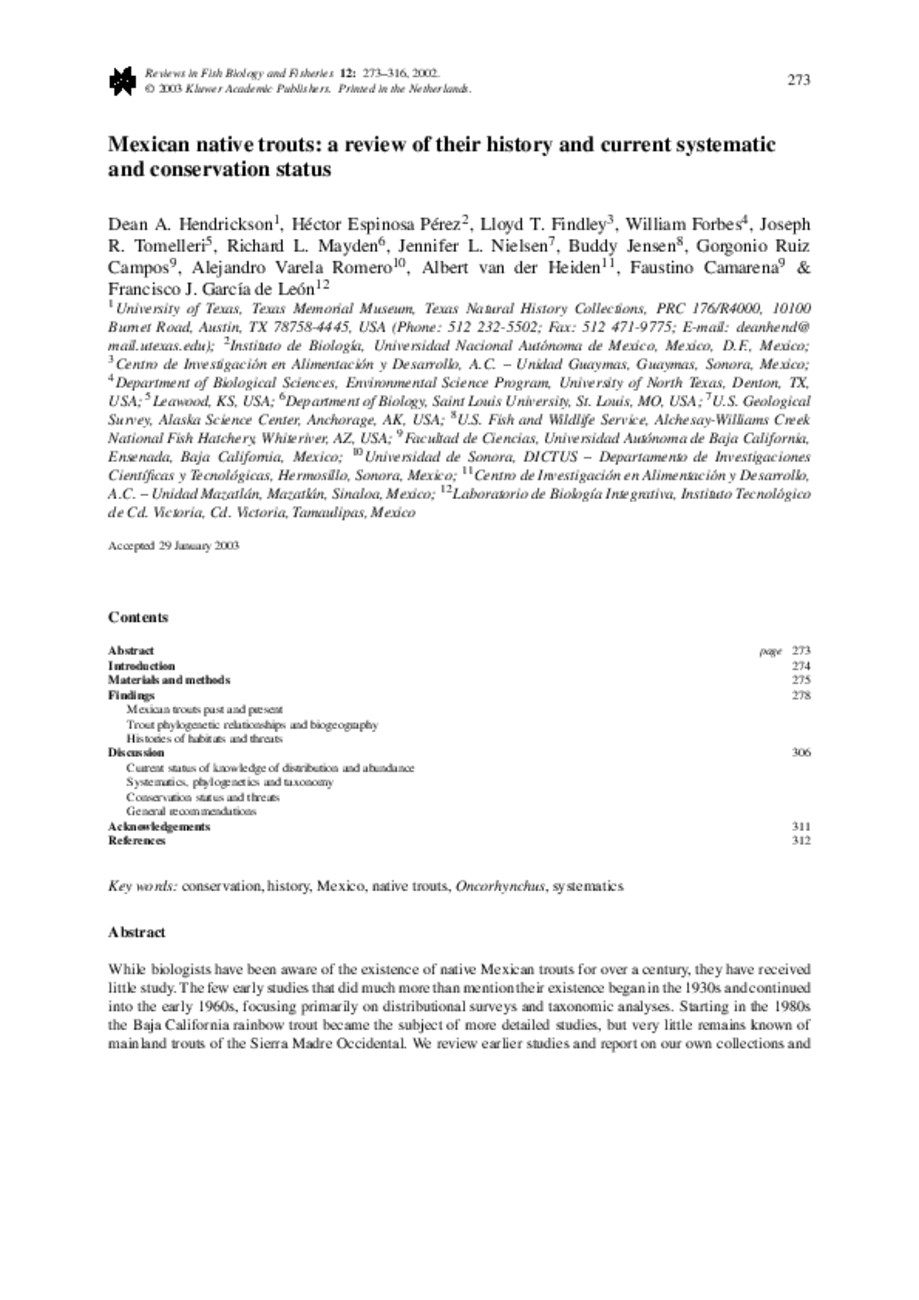Mexican Tative Trouts: A Review of Their History and Current Systematic and Conservation Status
While biologists have been aware of the existence of native Mexican trouts for over a century, they have received little study. The few early studies that did muchmore than mention their existence began in the 1930s and continued into the early 1960s, focusing primarily on distributional surveys and taxonomic analyses. Starting in the 1980s the Baja California rainbow trout became the subject of more detailed studies, but very little remains known of mainland trouts of the Sierra Madre Occidental. We review earlier studies and report on our own collections and 274 observations made between 1975 and 2000. We present newly discovered historical evidence that leads us to conclude that a “lost” cutthroat trout, a lineage not previously known from Mexico, was collected more than a century ago from headwaters of the Río Conchos (a major tributary of the Río Grande (= Río Bravo)), a basin not previously considered to harbor a native trout. We review the last century of regional natural resource management and discuss our own observations of trout habitats. Impacts of logging, road building and overgrazing are widespread and expanding. Many streams suffer from heavy erosion, siltation and contamination, and though long-term hydrologic data are generally not available, there is evidence of decreased discharge in many streams. These problems appear related to region-wide land management practices as well as recent regional drought. Trout culture operations using exotic rainbow trout have rapidly proliferated throughout the region, threatening genetic introgression and/or competition with native forms and predation on them. Knowledge of distribution, abundance, relationships and taxonomy, not to mention ecology and population biology, of native trouts of the Sierra Madre Occidental remains inadequate. Vast areas of most mainland drainages are still unexplored by fish collectors, and even rudimentary information regarding basic biology, ecology and population structure of stocks remains lacking. Concentrated exploration, research and management of this long overlooked and undervalued resource are all urgently needed. The history of natural resources exploitation that placed so many native trouts of the western United States on threatened and endangered species lists is repeating itself in the Sierra Madre Occidental. Without concerted action and development of region-wide socio-economic solutions for current, largely non-sustainable resource management practices, native Mexican trout gene pools will soon be in grave danger of extinction.

